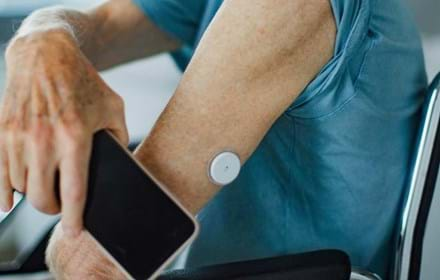
Researchers piece together clues to ‘solve’ what causes type 1 diabetes
Researchers hope they may have answered the medical mystery about what causes type 1 diabetes following a recent study – and they hope the results could lead to new treatments and prevent the condition in future.
A team of researchers from the University of Lincoln have identified a previously unknown molecule that is attacked by the immune system in people with type 1 diabetes.
The cause of type 1 diabetes is unknown but it is thought to be an auto-immune process. In effect, the body produces antibodies to the pancreas damaging it and preventing it producing insulin. In type 1 diabetes the pancreas fails to produce insulin and insulin injections are required for life.

Researchers have identified "mystery" molecules that could cause type 1 diabetes
In type 1 diabetes, the immune system reacts to particular molecules in the pancreas – called autoantigens - that it would normally ignore. People with type 1 diabetes have antibodies in their blood that are specific to each of the molecules. Tests are currently used to detect these antibodies: the more antibodies detected, the higher the risk a person has of developing type 1 diabetes. The tests are currently used to identify those most at risk of type 1 diabetes, and in the future researchers hope their findings could provide an opportunity to prevent the condition before it develops.
Previous research had found four molecules that are attacked by the immune system in type 1 diabetes. The identity of a fifth molecule – known only as ‘Glima’ for the past 20 years – had remained a mystery.
The research team at Lincoln have successfully identified this fifth molecule as Tetraspanin-7, which could make tests for predicting type 1 diabetes more accurate. They are now searching for ways to block the immune attack, in order to prevent in those at a high risk from developing type 1 diabetes.
The results of the study were recently published in Diabetes, the journal of the American Diabetes Association.
Dr Michael Christie, Reader in the School of Life Sciences at the University of Lincoln, who led the study, said: “Being able to detect circulating autoantibodies and identify their molecular targets has allowed scientists to develop tests for the clinical diagnosis of type 1 diabetes, and for the identification of individuals at high risk of developing the disease. Evidence from both animal studies and human trials indicate that type 1 diabetes may be prevented in individuals at risk, and a number of therapies to interfere with immune responses have proved effective in preventing disease development in animals and in slowing the loss of insulin-secreting cell function in human patients.
“There is now a focus on the development of procedures to interfere specifically in immune responses that cause type 1 diabetes, and it is therefore absolutely essential that we gather as much information as possible about the major targets of autoimmune responses.
“We already had some knowledge about the physical properties of ‘Glima’ but its molecular identity has for many years proved elusive. This has hampered the development of relevant autoantibody tests, but our research successfully identified ‘Glima’ as the substance Tetraspanin-7. We can now exploit this knowledge for diabetes prediction and immunotherapy.”
Screening for antibodies against the four molecules found in the pancreas is currently used to assess a person’s risk of type 1 diabetes. Following Dr Christie’s research, Tetraspanin-7 antibodies could now be included in this process. This could make tests more accurate and help researchers to understand a person’s individual and unique immune response – both of which are crucial in the development of treatments that can stop the progression of type 1 diabetes.
Further research at the University of Oxford will develop tests to detect Tetraspanin-7’s antibodies and better understand its function.
Eleanor Kennedy, DRWF Research Manager, said: “This is an exciting development in our appreciation of the processes and molecules involved in the onset of type 1 diabetes. There is currently a lot of international interest in identifying people at risk of type 1 diabetes and in the possibility of modulating their bodies’ responses to protect the precious beta cells that are otherwise destroyed by an errant immune system. Dr Christie’s discovery which identifies ‘Glima’ as Tetraspanin-7 could add significantly to our understanding of how to do this.”
Support DRWF by making a donation here
Find out more about DRWF-funded research here
Find out more about DRWF fundraising here
For latest update follow DRWF on Facebook, Instagram and Twitter
To receive the charity’s latest bulletins as they become available, please sign up here
Read DRWF diabetes information leaflets here
Join the Diabetes Wellness Network here
I would like to make a regular donation of
I would like to make a single donation of
There are lots of ways to raise money to support
people living with all forms of diabetes.
Bake, Swim, Cycle, Fly ... Do It For DRWF!
Fundraise with us
Recent News


